About the Company
Sarah Flint, based in New York City, is a luxury footwear brand known for its stylish yet comfortable Italian handcrafted shoes. Embracing a direct-to-consumer model, the brand ensures affordability without compromising on luxury or quality. Endorsed by icons like Meghan Markle and Amal Clooney, and backed by supermodel investor Cindy Crawford, Sarah Flint stands as a testament to elegance, sophistication, and meticulous craftsmanship.

With WFX, our documentation team now operates at maximum efficiency. What previously required a team of 6 is now handled seamlessly by a team of 4. This has freed up valuable time and energy, allowing us to think strategically about product development and long-term goals.

Krista Weisman
VP - Merchandising, Production, and Operations, Sarah Flint

Challenges they faced
Before WFX PLM, Sarah Flint faced operational challenges that impacted their efficiency. Key data, essential for informed decision-making, was dispersed across various platforms, leading to a lack of visibility and coherence. This fragmentation extended to their communication methods as well, with the team relying heavily on emails and isolated systems, creating silos within their team.
Compounding these issues were the inefficiencies inherent in their manual processes. The creation of style sheets and Bills of Materials (BOMs) on multiple systems was redundant and time-consuming.
Furthermore, the brand struggled with version control, finding it challenging to track and manage product versions effectively due to the disorganized nature of their data storage. These challenges were exacerbated by the resource-intensive nature of their documentation processes, consuming excessive manpower and limiting overall productivity.
Impact after implementing WFX

Reduced documentation workload from six to four team members, increasing productivity and operational efficiency.

Accelerated information retrieval and tech pack creation, streamlining workflows and shortening production timelines.

Freed up time for creative work and broader product strategy, enabling greater focus on seasonal planning.

Improved use of libraries and duplication tools sped up the development of new product lines.

Eliminated repetitive tasks, allowing the team to prioritize long-term planning and proactive decision-making.

Enhanced communication and collaboration across a predominantly remote team.

